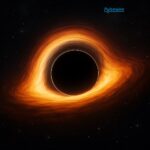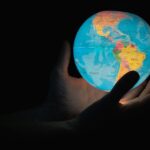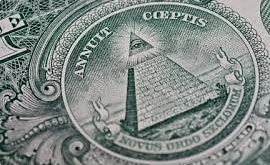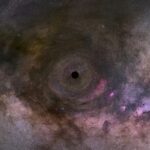Published on: May 8, 2025
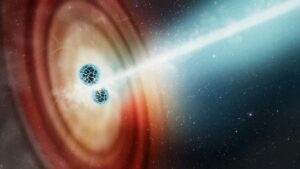
Beyond the Bang: Unveiling the Universe’s Possible Origins
Disclaimer:
This article explores speculative scientific theories about what may have existed before the Big Bang. These ideas are not confirmed facts but are areas of active research and debate in cosmology. Readers should approach the content as educational and not as established science.
The Big Bang’s Boundaries
The Big Bang theory remains our best model to explain how the universe expanded and evolved from a hot, dense state about 13.8 billion years ago. However, it doesn’t tell us how the universe originated or what may have come before it. The point where time and space as we know them began — known as a singularity — marks a boundary where the known laws of physics break down. What existed before this remains one of science’s biggest questions.
Let’s explore the leading theories scientists have proposed to answer this profound mystery.
1. The Cyclic Universe & Quantum Bounce
Some cosmologists suggest that the universe didn’t begin with a one-time explosion but instead follows an eternal cycle of expansion and contraction. After a universe collapses in a “Big Crunch,” it may bounce back into expansion — leading to another universe.
This concept is known as the Cyclic Universe or Quantum Bounce.
- Paul Steinhardt and Neil Turok developed models like the Ekpyrotic Universe, where our universe arises from brane collisions.
- Roger Penrose introduced the Conformal Cyclic Cosmology (CCC) model, suggesting each universe gives rise to the next in a seamless cycle.
- Loop Quantum Cosmology (LQC) also predicts that quantum gravity could prevent a singularity, causing the universe to bounce rather than begin from nothing.
While intriguing, these models require mechanisms — like quantum corrections to gravity — that are still being explored.
2. Eternal Inflation and the Multiverse
Inflation theory proposes that, just after the Big Bang, the universe expanded exponentially fast. Eternal inflation suggests that this process continues in different regions of space, endlessly producing new “bubble” universes — possibly with different physical laws.
In this scenario, our universe is just one among countless others — a concept known as the Multiverse.
- Andrei Linde and Alex Vilenkin are leading proponents of this theory.
- The idea naturally arises from models of inflation, but direct evidence for the multiverse does not currently exist.
This remains one of the most fascinating yet controversial ideas in modern cosmology.
3. Brane Cosmology and M-Theory
In the framework of string theory, matter and forces arise from tiny vibrating strings existing in multiple dimensions. One advanced form of string theory, known as M-Theory, proposes that our 3-dimensional universe is a “brane” floating in higher-dimensional space.
If two branes collide, the resulting energy could create a Big Bang-like event.
- Lisa Randall and Raman Sundrum developed RS models that explore extra dimensions.
- In the Ekpyrotic model (also linked to cyclic theories), brane collisions produce universes.
These theories require dimensions beyond our perception and remain highly theoretical but offer rich possibilities for understanding cosmic origins.
4. Quantum Foam and Quantum Gravity
At the smallest scales, space-time may not be smooth, but instead filled with random fluctuations — a frothy, ever-changing structure known as quantum foam. In such a scenario, space and time themselves might emerge from a fundamental quantum structure.
This idea is tied to the search for a theory of quantum gravity — the unification of Einstein’s general relativity with quantum mechanics.
- Loop Quantum Gravity and other approaches suggest that the Big Bang may have emerged from this foamy, uncertain pre-space-time state.
However, quantum gravity remains incomplete. Until this frontier of physics is better understood, these concepts remain speculative.
5. The No-Boundary Proposal
Physicist Stephen Hawking and James Hartle proposed that the universe doesn’t have a beginning in time in the traditional sense. Instead, they suggest that time could become “imaginary” at the earliest moments, smoothing out the singularity.
Imagine the Earth: just as there’s no “north” of the North Pole, there may be no “before” the Big Bang — time simply doesn’t exist in that sense.
- This is called the No-Boundary Proposal, and it removes the idea of a starting point.
- It is deeply mathematical and difficult to test directly but offers an elegant solution to avoid a singularity.
6. Is Time an Illusion?
Some scientists propose that time might not be fundamental — it could be an emergent property that arises from deeper physical laws.
In Conformal Cyclic Cosmology, Roger Penrose suggests that time may not have a true beginning or end. Instead, each universe flows into the next, and our notion of time may just be a feature of how we experience the universe.
Saying “time is an illusion” does not mean time is unreal — rather, it means that its nature may be more complex than our linear understanding.
Where Does Science Stand?
All of these theories aim to push beyond the Big Bang — but none of them are yet confirmed. Most lack direct evidence, and some require new physics or mathematical breakthroughs. Still, they represent science’s bold attempt to explain what may lie at the ultimate origin of everything.
As technology improves, and as we gather more data from telescopes and particle accelerators, we may eventually find clues about which — if any — of these ideas reflect reality.
Final Thoughts
The question “What came before the Big Bang?” forces us to confront the limits of our knowledge. While we don’t yet have a definitive answer, the ongoing exploration opens the door to new physics, new ideas, and possibly new ways of understanding existence itself.
Science doesn’t always offer quick answers — but it teaches us to keep asking the right questions.
About the Author
Priya is a science and technology content writer with a passion for explaining complex topics in accessible ways. His interests include cosmology, space exploration, and the future of science communication.
Note: The author is not a physicist. This article is intended for educational purposes and general interest only.
Further Reading & References
- NASA: What Powered the Big Bang?
- Perimeter Institute: Loop Quantum Gravity Overview
- PBS/NOVA: Stephen Hawking’s No-Boundary Proposal

